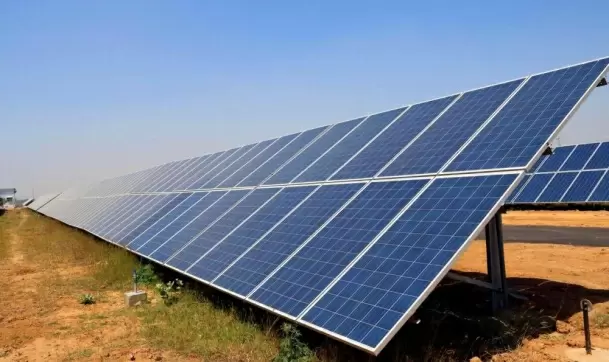M&M to adopt 58 MW captive solar plant
Mumbai
28-July-2021

Photo:IANS
Automobile major Mahindra & Mahindra (M&M) will adopt a 58 MW captive solar plant that is expected to generate about 100 million units of power annually beginning 2022.
"This project is a big step from M&M towards the protection and revival of natural ecosystems. The project will quadruple M&M's renewable power share from 12 to 56 per cent across Maharashtra including Mumbai, Nashik, Pune, Igatpuri and Nagpur."
"With this project, M&M is set to make significant progress towards the achievement of carbon neutrality and 'Science Based Targets' by mitigating 79,000 tons of carbon emissions per year."
As per the company, this is equivalent to nurturing 3.7 million trees every year or the provision of a year's supply of power to about 20,650 Indian households.
According to Veejay Nakra, Chief Executive Officer, Automotive Division, M&M: "We are committed to achieving our target of carbon neutrality by 2040 and are well on way to reduce carbon emissions across our manufacturing operations."
"This new captive solar plant will further our sustainability journey and make a significant contribution in protecting the environment and contributing to Government of India's solar power target of achieving 175 GW by 2022".-IANS
Watch This TWL Video
More Headlines
NPG Evaluates 8 Key Infrastructure Projects Under PM GatiShakti Plan
Rupee Symbol Debate Heats Up as Tamil Nadu Opts for ‘ரூ’
AIADMK Walks Out, BJP Boycotts Tamil Nadu Budget Session
AI Cybersecurity Startup Neural Defend Raises $600K in Pre-Seed Round
Chennai Doctor and Family Found Dead Amid ₹5 Crore Business Loss
NPG Evaluates 8 Key Infrastructure Projects Under PM GatiShakti Plan
Rupee Symbol Debate Heats Up as Tamil Nadu Opts for ‘ரூ’
AIADMK Walks Out, BJP Boycotts Tamil Nadu Budget Session
AI Cybersecurity Startup Neural Defend Raises $600K in Pre-Seed Round
Chennai Doctor and Family Found Dead Amid ₹5 Crore Business Loss










